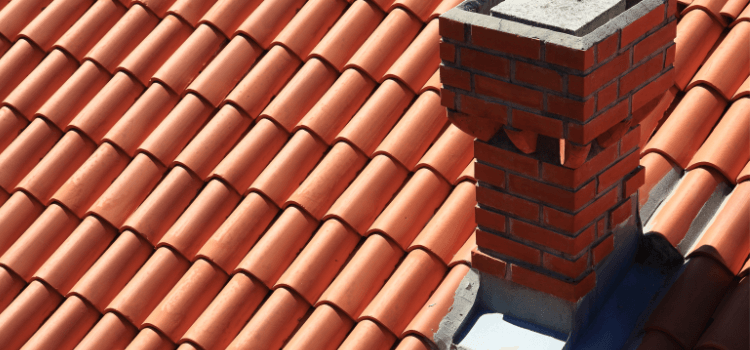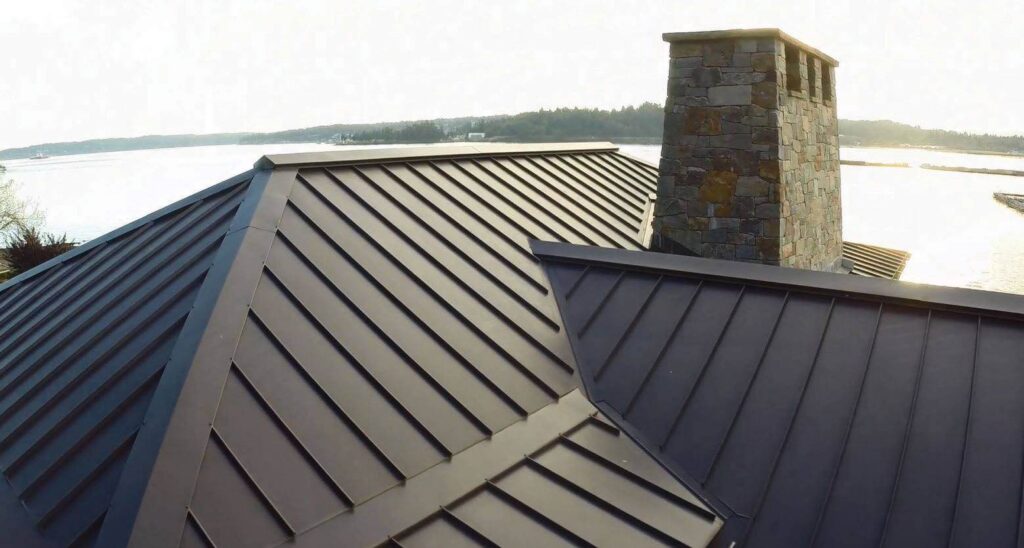
Roofing plays one of the most crucial roles in your commercial facility’s ability to regulate indoor temperatures. A well-maintained and weatherproofed roof translates into significant savings on energy costs. On the other hand, a roof in poor condition can lead to uncomfortable temperature fluctuations at best and health and safety concerns at worst.
You may need a full commercial roof replacement if your annual inspection traces your summertime sweats and wintertime shivers back to what’s over your head. But what type of new roofing will you need installed? Let’s take a look at a few different types of commercial roofing materials and how they can affect indoor temperatures.
How Roofing Materials Can Affect Indoor Temperatures
Asphalt Shingles – Roofing Materials

In the United States, you’ll see asphalt shingles everywhere on both commercial and residential buildings. They are made from a mat of fiberglass or organic felt coated in asphalt and ceramic granules. Because asphalt shingles are dark in color, they don’t reflect much heat and light. Instead, they absorb heat from the sun, resulting in increased indoor temperatures during the summer months. This may be detrimental if your business is located in a hot and sunny climate. However, the extra heat may be a benefit for those in colder climates. In addition, asphalt shingles provide superior insulation, keeping indoor temperatures consistent during the winter months.
Metal – Roofing Materials

Metal roofing is becoming increasingly popular due to its durability, low maintenance requirements, and eco-friendliness. Though they can come in a variety of colors, metal roofs tend to be lighter in color, which is more reflective and therefore prevents the absorption of solar heat. A metal roof may be a smart choice if you could use the cooler indoor temperatures throughout the summer or if your region gets a considerable amount of snow each winter.
Tile – Roofing Materials
Tile is a centuries-old material still used in many parts of the world. This red or terracotta colored concrete or kiln-fired clay is a natural insulator with a high rate of reflectivity. For comparison, dark asphalt shingles may only reflect up to 15% of sunlight, while tile reflects a minimum of 33%. Tile’s high thermal mass also helps to regulate indoor temperatures by absorbing heat during the day and releasing it at night. As a result, tile roofing may be the best material for you if you can expect record-setting heat or fluctuating temperatures across the day and night.
Concrete – Roofing Materials
Concrete roofing is a mixture of portland cement, aggregate (sand or other crushed stone), and water. Its standard white or light gray color works well to reflect solar radiation, reducing indoor temperatures in the hot season. Because it takes a longer time to heat up, concrete is best suited to commercial facilities located in hotter climates that can benefit from its stubborn coolness.
In Conclusion
It is imperative to choose the right type of roofing material for your facility according to your local climate. Materials like asphalt shingles and tile absorb heat from the sun to warm your interiors, while metal and concrete reflect it to keep it cool. That said, other factors like insulation, thermal mass, air flow, and color can all affect a material’s ability to regulate indoor temperatures as well. Before making any final decisions, consult your local commercial roofing contractor for a thorough evaluation and recommendation on the best material for your facility.






Leave a Reply